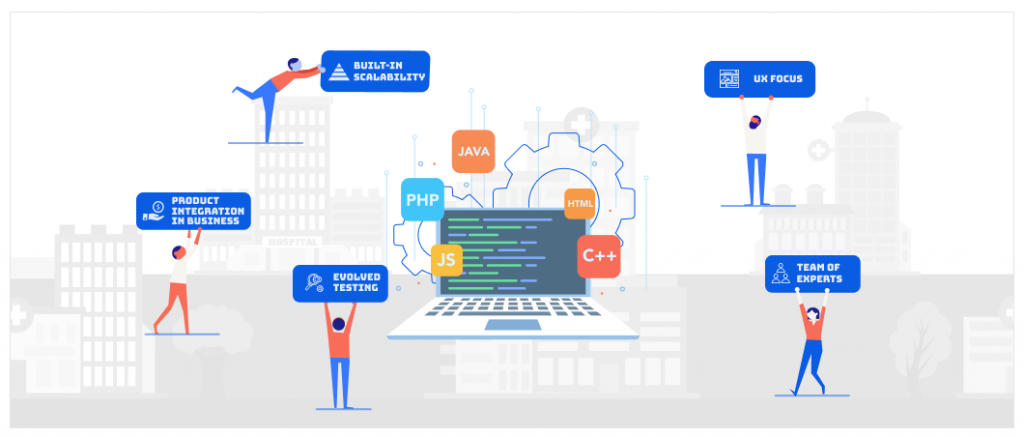Last updated on October 21st, 2024
The most important single aspect of software development is to be clear about what you are trying to build – Bjarne Stroustrup, Creator of C++
Building a great product is the aim of every product development team. However, even large, experienced product development teams often experience challenges and roadblocks while developing a software product. I’ve written in the past about the qualities a software engineer should possess. And, we have also written about the qualities an ideal product development team should possess. What you need is a product development team that facilitates communication, shares ideas, and identifies constraints early on to ensure the successful development of the product -within time and budget constraints and at the highest quality possible. But is that enough to deliver a great software product? On reflection, clearly, there is something more that goes into the mix. The recipe is missing some key ingredients.
5 Essential Ingredients for Successful Product Development
I’ve listed five such ingredients, that according to me, must come together to form the perfect recipe for successful product development:
A team of experts:
Well, of course! In order to leverage modern technology and build a great software product, you need to have the right set of technology experts – developers and testers – from a variety of backgrounds that bring with them the right combination of experience and knowledge. A team of expert developers and testers can build a strong foundation, use a robust project management methodology, bring in best practices, and incorporate an incredibly strong testing process into the development process to ensure the end product meets the intended needs.
Integration of the product into the business:
In a world where globalization has become so common, many development teams struggle to scale gracefully and manage costs. This is often due to the presence of disconnected systems and dispersed teams that cause process bottlenecks and employee productivity issues. By integrating your product (and product development) deeply into your business, you can achieve process efficiency across the organization, dramatically improve visibility into processes, accelerate product delivery, and achieve substantial time and cost savings.
Evolved testing:
With software needs getting increasingly complex, combining endless combinations of protocols and technologies to build a great product requires development teams to embrace lean testing approaches to deliver innovative software that meets dynamic needs. Since it costs four or five times as much to fix a software bug after the release stage than in the design phase, continuous testing ensures bugs are identified and rectified early in the life cycle. Testing early and often is important to ensure development timelines do not get compromised.
UX focus:
User experience (UX) and user interface (UI) must be prime considerations when building a software product. Not only does your product need to run efficiently 24×7, but it also needs to enable users to achieve what they’re trying to achieve. A poor navigational structure or a poorly designed interface is certainly not something end-users will accept. Keeping a strong focus on UI and UX and creating software products that provide impeccable, seamless and intuitive user experiences is what will differentiate you in an overcrowded market.
Built-in scalability:
Truly great software products are built for evolution. Given the changing demands of today’s dynamic customer, all products need to be future-ready. Teams need to leverage technologies that support such changes and that can evolve with the changing needs of customers. By developing a user-centric approach, and by adopting responsive methodologies like Agile and DevOps, you can increase the speed of delivery, incorporate user feedback faster, and drive substantial value.
Setting up a great product development team is never easy -nor is it the end in itself. The end we are all shooting for is great products. By having a team of expert developers and testers, integrating products into business, ensuring continuous testing and scalability, and focusing on UX we can turn out those favorable outcomes. In the end, remember that irrespective of the methodologies, tools, and practices you use, successful teams are driven by only one purpose: the purpose of building great products! And, that’s a tasty treat worth having.
This blog was originally published on Linkedin Go to blog
FAQ
Why is product development important?
Product development is crucial for businesses to stay competitive and meet customer demands. It allows companies to innovate, address market gaps, and create value-added offerings that can drive revenue growth and customer satisfaction.
What are the stages of product development?
The stages of product development typically include ideation, research, concept development, design, prototyping, testing, manufacturing, and launch. These stages may vary depending on the nature of the product and industry.
What are the key challenges in product development?
Key challenges in product development include balancing cost, quality, and time-to-market, managing cross-functional teams, staying aligned with market trends, securing funding, and navigating regulatory requirements.
How do you mitigate risks in product development?
Risk mitigation in product development involves identifying potential risks early, implementing contingency plans, conducting thorough testing, and maintaining open communication among team members and stakeholders.
What is the difference between product development and product management?
Product development focuses on the creation and improvement of products, while product management involves overseeing the entire lifecycle of a product, including strategy, planning, marketing, and post-launch activities.
How do you measure the success of a product development project?
Success in product development can be measured using various metrics, such as revenue generated, customer satisfaction scores, market share gains, product adoption rates, and return on investment (ROI). Evaluating these metrics helps assess the effectiveness of the product development efforts.



